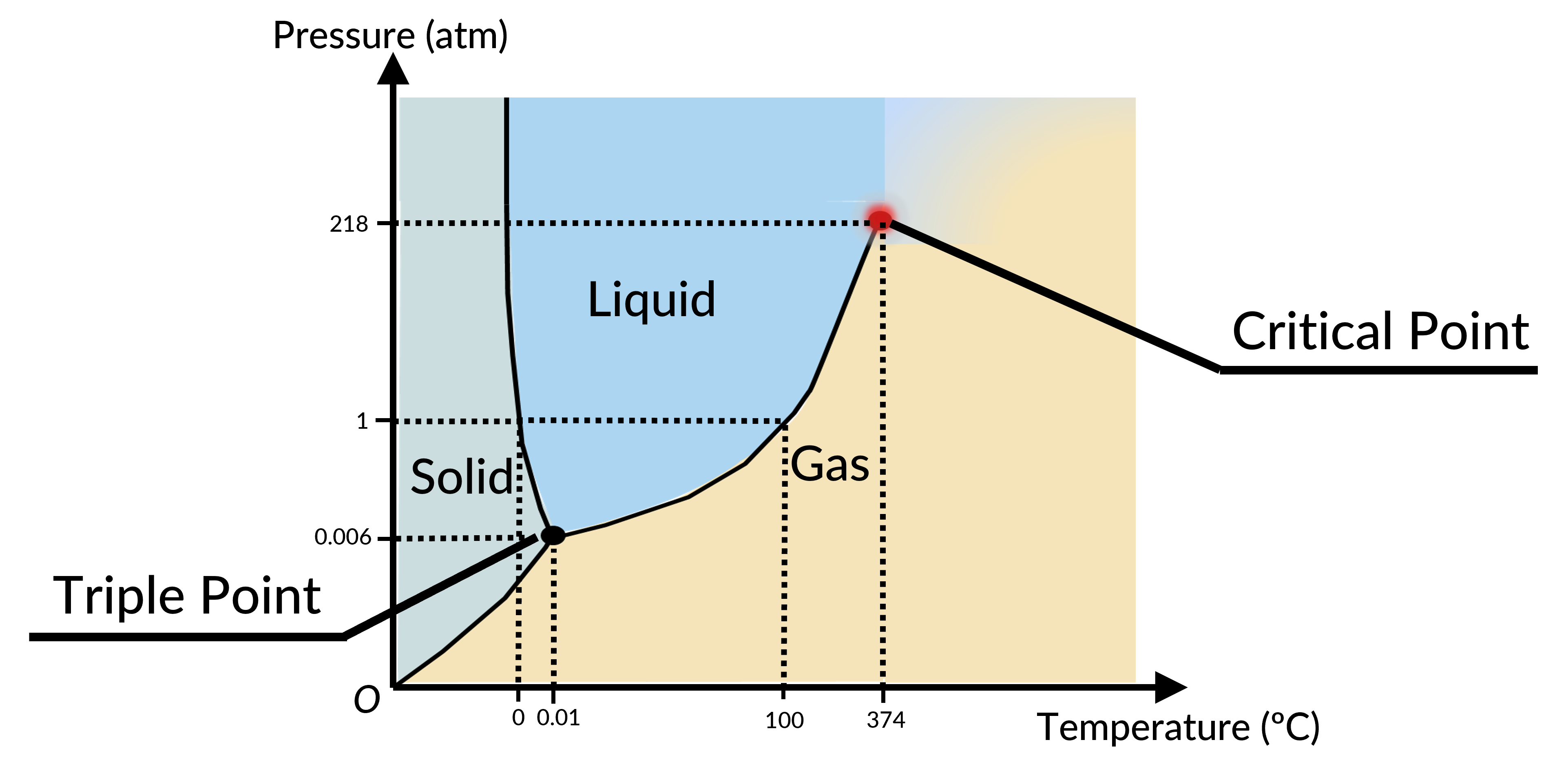19.9 : Phase Diagram
The phase of a given substance depends on the pressure and temperature. Thus, plots of pressure versus temperature showing the phase in each region provide considerable insights into the thermal properties of substances. Such plots are known as phase diagrams. For instance, in the phase diagram for water (Figure 1), the solid curve boundaries between the phases indicate phase transitions (i.e., temperatures and pressures at which the phases coexist).

As the pressure increases, the boiling temperature of water rises gradually to 374 °C at a pressure of 218 atm. This can be demonstrated in a pressure cooker, which cooks food faster than an open pot, because the water can exist as a liquid at temperatures greater than 100 °C without all boiling away. The boiling point curve ends at a certain point called the critical point, the temperature above which the liquid and gas phases cannot be distinguished; the substance is called a supercritical fluid. At a sufficiently high pressure above the critical point, a gas has the density of a liquid but does not condense. The pressure at this critical point is known as the critical pressure. Carbon dioxide, for example, is supercritical at all temperatures above 31.0 °C, the point at which all three phases exist in equilibrium. For water, the triple point occurs at 273.16 K (0.01 °C) and 611.2 Pa; this is a more accurate calibration temperature than the melting point of water at 1.00 atm, or 273.15 K (0.0 °C).
Z rozdziału 19:

Now Playing
19.9 : Phase Diagram
The Kinetic Theory of Gases
5.7K Wyświetleń

19.1 : Równanie stanu
The Kinetic Theory of Gases
1.6K Wyświetleń

19.2 : Równanie gazu doskonałego
The Kinetic Theory of Gases
6.6K Wyświetleń

19.3 : Równanie Van der Waalsa
The Kinetic Theory of Gases
3.9K Wyświetleń

19.4 : Wykresy pV
The Kinetic Theory of Gases
3.9K Wyświetleń

19.5 : Teoria kinetyczna gazu doskonałego
The Kinetic Theory of Gases
3.4K Wyświetleń

19.6 : Molekularna energia kinetyczna
The Kinetic Theory of Gases
5.0K Wyświetleń

19.7 : Rozkład prędkości molekularnych
The Kinetic Theory of Gases
3.8K Wyświetleń

19.8 : Rozkład Maxwella-Boltzmanna: rozwiązywanie problemów
The Kinetic Theory of Gases
1.4K Wyświetleń

19.10 : Średnia swobodna ścieżka i średni czas wolny
The Kinetic Theory of Gases
3.3K Wyświetleń

19.11 : Pojemność cieplna: rozwiązywanie problemów
The Kinetic Theory of Gases
473 Wyświetleń

19.12 : Prawo ciśnienia cząstkowego Daltona
The Kinetic Theory of Gases
1.3K Wyświetleń

19.13 : Prędkości ucieczki gazów
The Kinetic Theory of Gases
879 Wyświetleń
Copyright © 2025 MyJoVE Corporation. Wszelkie prawa zastrzeżone